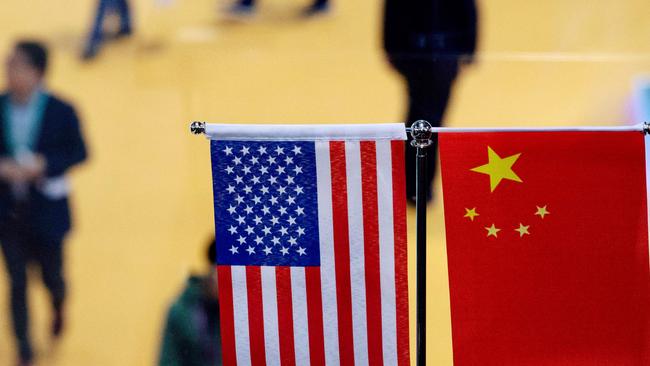Devil’s in the detail of trade deal
Details have emerged from the US’s first-stage trade deal with China, leaving questions over how far it goes.

Details have emerged from the US’s first-stage trade deal with China, which marked a milestone in President Donald Trump’s initiative to rebalance trade with Beijing but left questions over how far it goes to level the playing field for US businesses.
The limited agreement, capping months of sometimes testy negotiations, called for China to purchase more products from American farmers and other exports, US officials said. In return, the US put the brakes on new tariffs set to take effect on Sunday and agreed to reduce some existing levies. Both sides termed it a “phase one” deal and said negotiations would continue on remaining issues.
Mr Trump called the deal “phenomenal” and told reporters in the Oval Office that the US would continue to use the remaining tariffs as leverage in future negotiations with China.
“I say affectionately that the farmers are going to have to go out and buy much larger tractors because it means a lot of business, a tremendous amount of business,” Mr Trump said.
But doubts remained, with some critics claiming the deal amounted to little more than China agreeing to step up US farm purchases and not make the kind of long-term economic changes that US officials have said are needed to level the playing field for businesses.
“He has sold out for a temporary and unreliable promise from China to purchase some soybeans,” Senate Democratic leader Chuck Schumer of New York said.
Others said that even with the limitations, the phase-one deal marked a significant turning point in US-China relations. “This doesn’t solve all of our problems,” said Clete Willems, a former Trump administration official. “But it is very important for the US and China to be able to say ‘yes’ to each other on some things.”
As part of the deal, the US cancelled plans to impose fresh tariffs on $US156bn ($227bn) in annual imports of Chinese-made goods — including smartphones, toys and consumer electronics — that were set to go into effect Sunday. The US will also slash the tariff rate in half on roughly $US120bn of goods affected on September 1, from 15 per cent to 7.5 per cent.
US tariffs of 25 per cent would remain on roughly $US250bn in Chinese goods, including machinery, electronics and furniture. In exchange, officials in Washington said China agreed to increase American agricultural purchases by $US32bn over previous levels over the next two years.
That would increase total farm-product purchases to $US40bn a year, with China working to raise it to $US50bn a year, US Trade Representative Robert Lighthizer said. The farm purchases would be part of total additional exports of $US200bn over two years, he said.
He also said China made specific commitments on intellectual property, including counterfeiting, patent and trademark issues and pharmaceutical rights, as well as on preventing the forced transfer of technology from firms entering the Chinese market. He and Chinese Vice-Premier Liu He were expected to sign the deal in early January, with the pact coming into force 30 days later.
While he portrayed the first phase as a crucial step, Mr Lighthizer acknowledged tougher issues lay ahead in future negotiating rounds, including opening up closed Chinese markets, if the US is to achieve a fundamental shift in the trade relationship with China. Neither government submitted a full text or a detailed summary of the deal, hamstringing efforts to determine the winners and losers in the world’s two biggest economies or the quality of the agreement.
US stockmarkets ended Friday slightly higher, with some analysts saying they were awaiting more details on the specifics.
“The devil remains in the details,” said Bankrate.com analyst Mark Hamrick said. “We await further word on purported aspects of the agreement including purchases of US farm goods, intellectual property protections, technology transfers and access to China’s financial sector.”
Mr Lighthizer declined to specify when the two countries would begin active negotiations on phase two, where US negotiators are likely to seek further progress on knottier issues such as Chinese pressure on American businesses to share technology and Beijing’s subsidies to domestic companies.
Chinese negotiators struck a more cautious tone. Senior Chinese economy officials didn’t disclose much detail, except to confirm that both sides had reached an agreement in principle.
ADDITIONAL REPORTING: Alex Leary



To join the conversation, please log in. Don't have an account? Register
Join the conversation, you are commenting as Logout